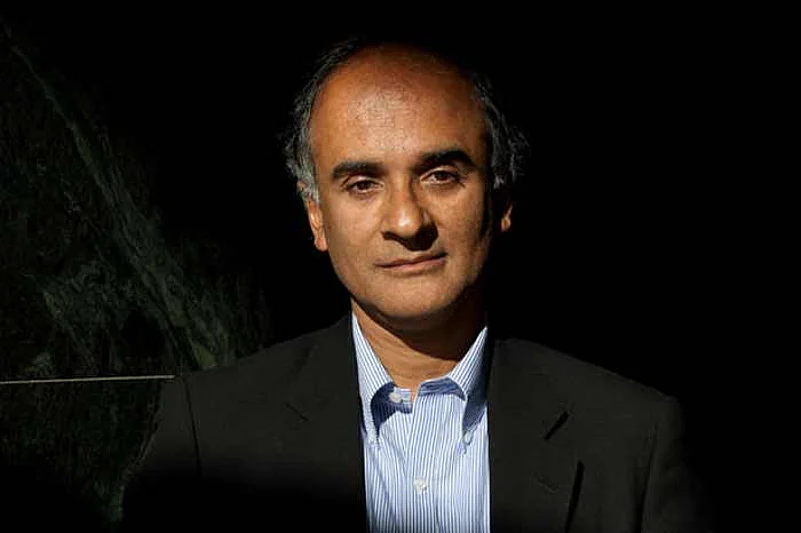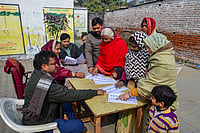“You really want to spend all this time with Graham Greene?” asks Hiroko, Iyer’s Japanese companion, somewhere in The Man Within My Head. It’s a good question for the reader to ask himself before he invites the man within to enter his head!
Themed around Iyer’s obsession with Greene the man and writer and embroidered by his attempt to unravel answers to awkward personal questions concerning his very un-Greene-like father, the book can torture the reader like a broken-record-dream for which homeopaths prescribe pulsatilla.
A quotation from Thoreau launches one into the convoluted mental terrain of the book: “What means the fact—which is so common, so universal—that some soul that has lost all hope for itself can inspire in another listening soul an infinite confidence in it, even while it is expressing its despair?”
I found nothing in Iyer’s despair to inspire confidence. Also, if it is spiritual inspiration one seeks, it would be better to spend a week in silence somewhere than attempt to find it lurking within the shadows of the man within my head. As Sri Sri Ravishankar, one of our more popular contemporary gurus, has remarked astutely: to even think about enlightenment is to be stuck in the head.
The Man Within My Head is definitely a book which is firmly stuck in the head even when it reaches out for less tangible wisdom.
Having said which, one can find some wise if not always terribly original observations if one trawls systematically through its pages. For Greene stalkers, there is a deeply thought out perspective on the iconic writer. Here is a sampling: “You can’t read (Greene’s) books in terms of ideologies, because both circumstances and the heart are so contradictory that no one who is honest can ever settle to anything for long....” And here is another: “Like Greene, I suspect I’d never had much time for memoir...the phantom stories startled and intrigued me because they reminded me how, in every book, there is another text, written in invisible in-between the lines, that may be telling the real story, of what the words evade.”
If you feel you have heard much of this before (Nadine Gordimer and Hemingway for the last quote, for example), you probably have. Still, I suppose that does not make the perspectives any more or less true. Just very been-there-done-it.
Many of Iyer’s aphoristic observations emanate from fashionably far-flung places like Bolivia and Bhutan, and there’s a sort of external travelogue element to the book. But the landscape described is largely internal, Greene-obsessed and self-obsessed.
Who bloody cares whether Iyer went to the same school as Greene’s son or was born in the same hospital as his daughter or lived five minutes walking from where he once lived as a boy or whatever. All this might have been interesting as the subject of a Zanussi film, but in Iyer’s hands it’s excruciatingly boring.
Sometimes the quality of the research also appears a bit casual. When he is in Sri Lanka during the civil war, he observes that the revolutionary Tamils who kill and are killed are people who look like him and have names like Iyer.
I’m not sure how many Tamil Brahmins—Iyers or Iyengars—there were working as suicide bombers for the Tigers. And Tamil Brahmins, for better or for worse, don’t look like the rest of their Dravidian brethren. That’s as basic an error as Greene carelessly putting phrases like ‘awfully nice’ into the mouths of Americans in his novels.
Iyer also steals glances at his charismatic academic south Indian Brahmin father through contrapuntal glasses, which portray him as being strikingly different from Greene. Raghavan Iyer seems like an interesting man, definitely more colourful than Greene, given to wearing bright yellow shirts and accelerating an Alfa Romeo around California mountain corners. The son of a Ford factory worker from Bombay who won India’s only Rhodes scholarship at that time, with an upper-class Cathedral School bride as a bonus, he promises to entertain, but is not allowed to. All we get are hints of a guru-like figure playing the Indian sage to earn a fanatical following amongst his ’60s Californian students. But Iyer does little to bring the man alive, preferring to escape to the shelter of Greene’s self-doubting characters.
Towards the end, just before he dies, Iyer’s father breaks down on the phone after having read a piece he has written on Greene. It has been conceived as a sort of a meeting between two of the book’s central characters. It has great potential to tie things up, but Iyer treats it with a stiff upper lip. We are left lamenting: rip the men within your head.


























